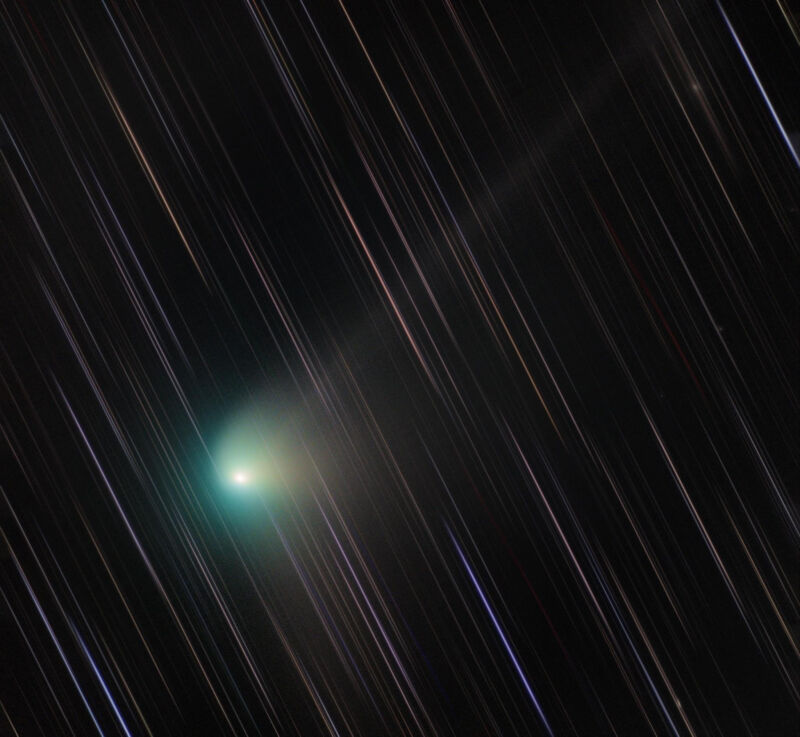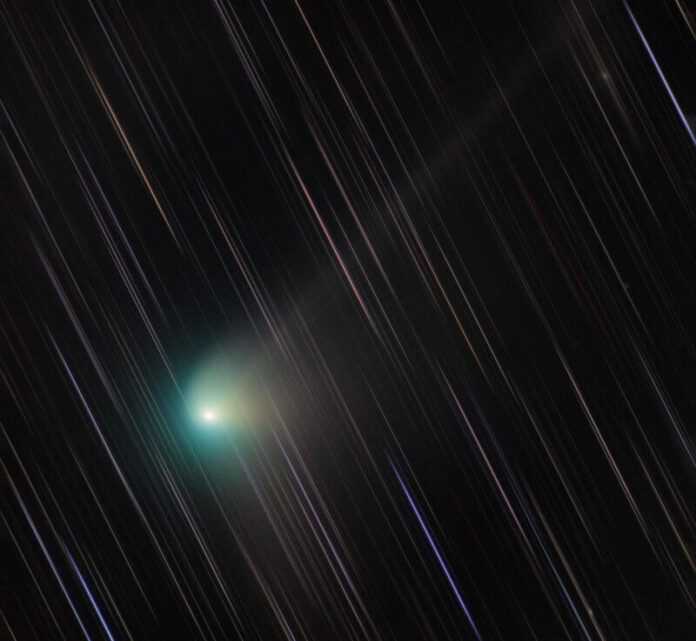
Enlarge / A view of Comet C/2022 E3 (ZTF) taken earlier this year. (credit: Maarten Butter)
Welcome to the Daily Telescope. There is a little too much darkness in this world and not enough light—a little too much pseudoscience and not enough science. We'll let other publications offer you a daily horoscope. At Ars Technica, we'll take a different route, finding inspiration from very real images of a universe that is filled with stars and wonder.
Good morning. It is October 26, and today's image showcases a comet that made its closest approach to Earth on February 1 of this year. The comet has an unwieldy name, Comet C/2022 E3 (ZTF). But this tells us a lot about it, actually. The "C" means that it is non-periodic, meaning that it originated in the Oort cloud that lies at the edge of our Solar System.
We can also discern that the comet was discovered in 2022, and was the third comet discovered during the first half of March (E3). Finally, the ZTF refers to its discovery by the Zwicky Transient Facility, where a 1.2-meter telescope is used to survey the night sky for just such objects.
Read 5 remaining paragraphs | Comments
Ars Technica - All contentContinue reading/original-link]




